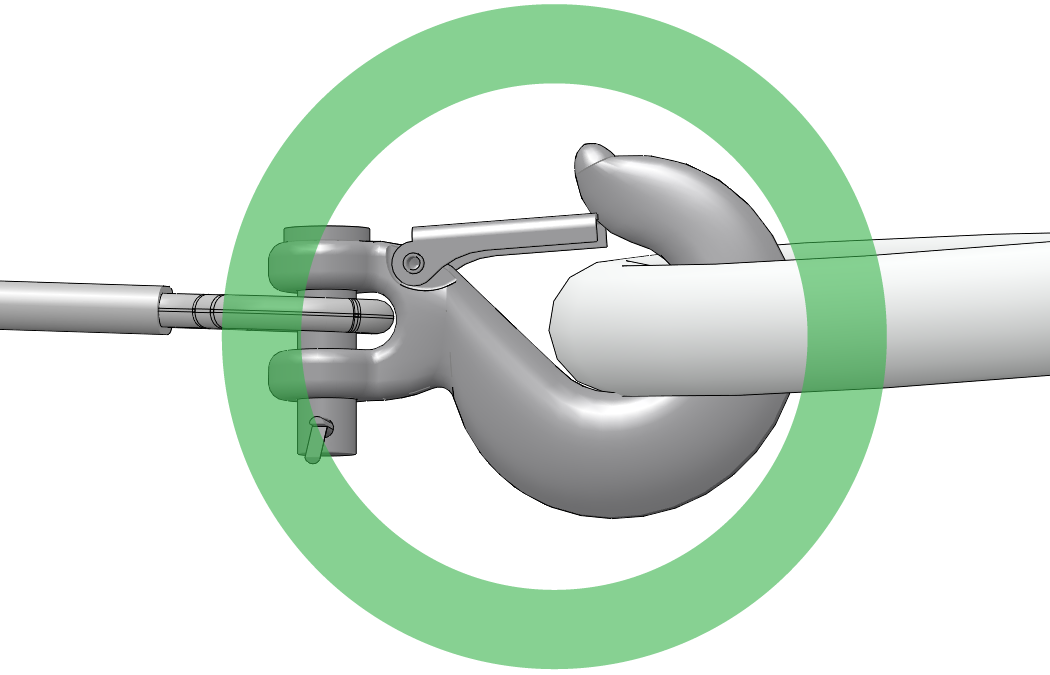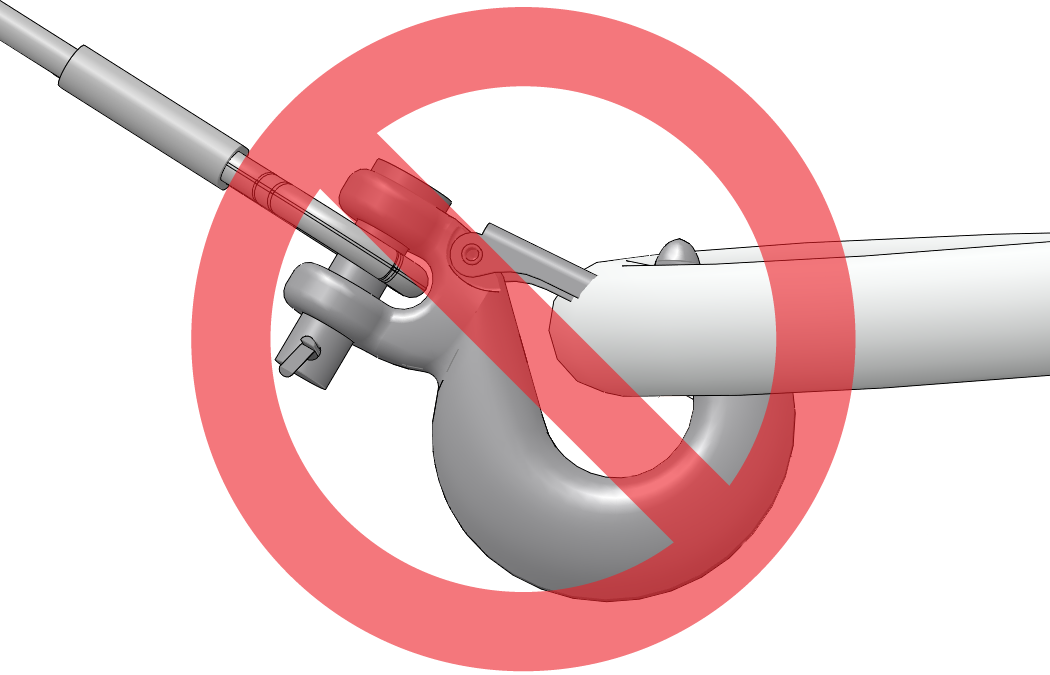Read the Winch Safety
Precautions in the preceding pages before using your winch.
| TIP |
|
Consider practicing the operation and use of your winch
before you actually need to use it in the field. |
 WARNING WARNING |
|
Improper winch use can result in SEVERE INJURY or DEATH.
Always follow all winch instructions and warnings in this manual.
Each winching situation is unique.
- Take your time to
think through the winching you are about to do.
- Proceed slowly and
deliberately.
- Never hurry or rush
during winching.
- Always pay attention
to your surroundings.
- You may need to change
your winching strategy if it is not working.
- Always remember that
your winch is very powerful.
- There are simply
some situations that you and your winch will not be able to deal with.
Do not be afraid to ask others to
help when this
happens.
|
- Always inspect the
vehicle, winch, winch cable and winch controls for any signs of damage
or parts in need of repair or replacement
before each use. Pay particular attention to the first 3 feet (1 meter)
of winch cable if the winch is being used (or has been used) for lifting
an accessory plow assembly. Promptly
replace any worn or damaged cable.
- Never operate a winch
or a vehicle in need of repair or service.
- Always apply your
vehicle’s park brake and/ or park mechanism to hold the vehicle in
place during winching. Use wheel chocks
if needed.
- Always use the hook
strap when handling the hook.
 WARNING WARNING |
|
Never put your fingers into the hook. This could lead
to SEVERE INJURY. |
- Attach the hook itself
onto the load or use a tow strap or chain to secure the load to the
winch cable.


| TIP |
|
A “tow strap” is NOT intended to stretch. A “recovery
strap” is designed to stretch. |
 WARNING WARNING |
| Never use a recovery strap when winching due to the excessive energy
that can be released if the winch cable breaks. This
can result in SEVERE
INJURY or DEATH. See the Shock
Loading section on Shock
Loading. |
- Never hook the winch
cable back onto itself. This will damage the winch cable and may result
in winch cable failure.
 WARNING WARNING |
| Replace the winch cable at the first sign of damage to prevent SEVERE
INJURY or DEATH in the event of failure. For your safety,
always replace POLARIS
winch parts (including the cable) with genuine POLARIS replacement
parts available at your authorized
POLARIS dealer, or
other qualified dealer. |
- If possible, keep
the winch cable aligned with the centerline of the winching vehicle.
This will help the spooling of the
winch cable and reduce the load on
the fairlead.
- If freeing a stuck
vehicle by attaching to a tree, use an item such as a tow strap to
avoid damaging the tree during winch
operation. Sharp cables and chains
can damage and even kill trees. Please remember to TreadLightly® (treadlightly.org).
- Before operating
the winch, be sure that the safety latch on the winch cable hook is
fully seated when the load is attached.
- Never operate your
winch with a damaged hook or latch. Always replace damaged parts before
using the winch.


- Never remove the
hook strap from the hook.
- Release the winch
clutch and pull out the winch cable.
- Pulling out as much
cable as possible maximizes the winch’s pulling capacity. Always be
sure that at least five (5) full turns
of winch cable are wrapped around the winch
drum at all times. The friction provided by this wrapped cable allows
the drum
to pull on the winch cable and move the load.
- Read and adhere to
the following information for winch damping to ensure safe winch use.
- In order to absorb
energy that could be released by a winch cable failure, always place
a “damper” on the winch cable. A damper
can be heavy jacket, tarp, or other
soft, dense object. A damper can absorb much of the energy released
if a winch cable breaks
when winching. Even a tree limb can
help as a damper if no other items are available to you.
- Lay the damper on
top of the mid-point of the winch cable length that is spooled out.
- On a long pull, it
may be necessary to stop winching so that the damper can be repositioned
to the new mid-point of the winch
cable. Always release the tension
on the winch cable before repositioning the damper.
- Avoid being directly
in line with the winch cable whenever possible. Also, never permit
others to stand near or in line with
the winch cable during winch operation.
- Never hook the winch
cable back onto itself. This will damage the winch cable and may result
in winch cable failure.
- Never use straps,
chains or other rigging items that are damaged or worn.
- The ONLY time a winch-equipped
vehicle should be moving when using the winch is when that vehicle
itself is stuck. The winch
equipped vehicle should NEVER be in motion
to “shock” load the winch cable in an attempt to move a second stuck
vehicle. See
the Shock Loading section on Shock
Loading. For your safety, always follow these guidelines when
winching a vehicle free:
- Release the winch
clutch and spool out the necessary length of winch cable.
- Align the winch cable
as close as possible to the winching vehicle’s centerline.
- Attach the winch
cable hook to the anchor point or the stuck vehicle’s frame following
instructions in this manual.
- Re-engage the clutch
on the winch.
- Slowly winch in the
slack in the winch cable.
- Select the proper
vehicle gear to propel the stuck vehicle in the direction of winching.
- Shift to the lowest
gear available on the stuck vehicle.
- Slowly and carefully
apply vehicle throttle and winch together to free the vehicle.
- Stop winching as
soon as the stuck vehicle is able to propel itself without the help
of the winch.
- Detach the winch
cable hook.
- Rewind the winch
cable evenly back onto the winch drum following the instructions in
this manual.
- Never attempt to
winch another stuck vehicle by attaching the winch cable to a suspension
component, brush guard, bumper or
cargo rack. Vehicle damage may result. Instead,
attach the winch to a strong portion of the vehicle frame or hitch.
- Extensive winching
will run down the battery on the winching vehicle. Let the winching
vehicle’s engine run while operating
the winch to prevent the battery from running
low if winching for long periods.
- The winch motor may
become hot during winch use. If you winch for more than 45 seconds,
or if the winch stalls during operation,
stop winching and permit the winch to cool
down for 10 minutes before using it again.
- After winching is
complete, especially if winching at an angle, it may be necessary
to re-distribute the winch cable across
the winch drum. You will need an assistant
to perform this task.
- Release the clutch
on the winch.
- Feed out the winch
cable that is unevenly bunched up in one area.
- Re-engage the winch
clutch.
- Have an assistant
pull the winch cable tightly with about 100 lbs. (45 kg) of tension
using the hook strap.
- Slowly winch the
cable in while your assistant moves the end of the winch cable back
and forth horizontally to evenly distribute
the winch cable on the drum.
- Doing this reduces
the chances of the winch cable “wedging” itself between lower layers
of winch cable.





